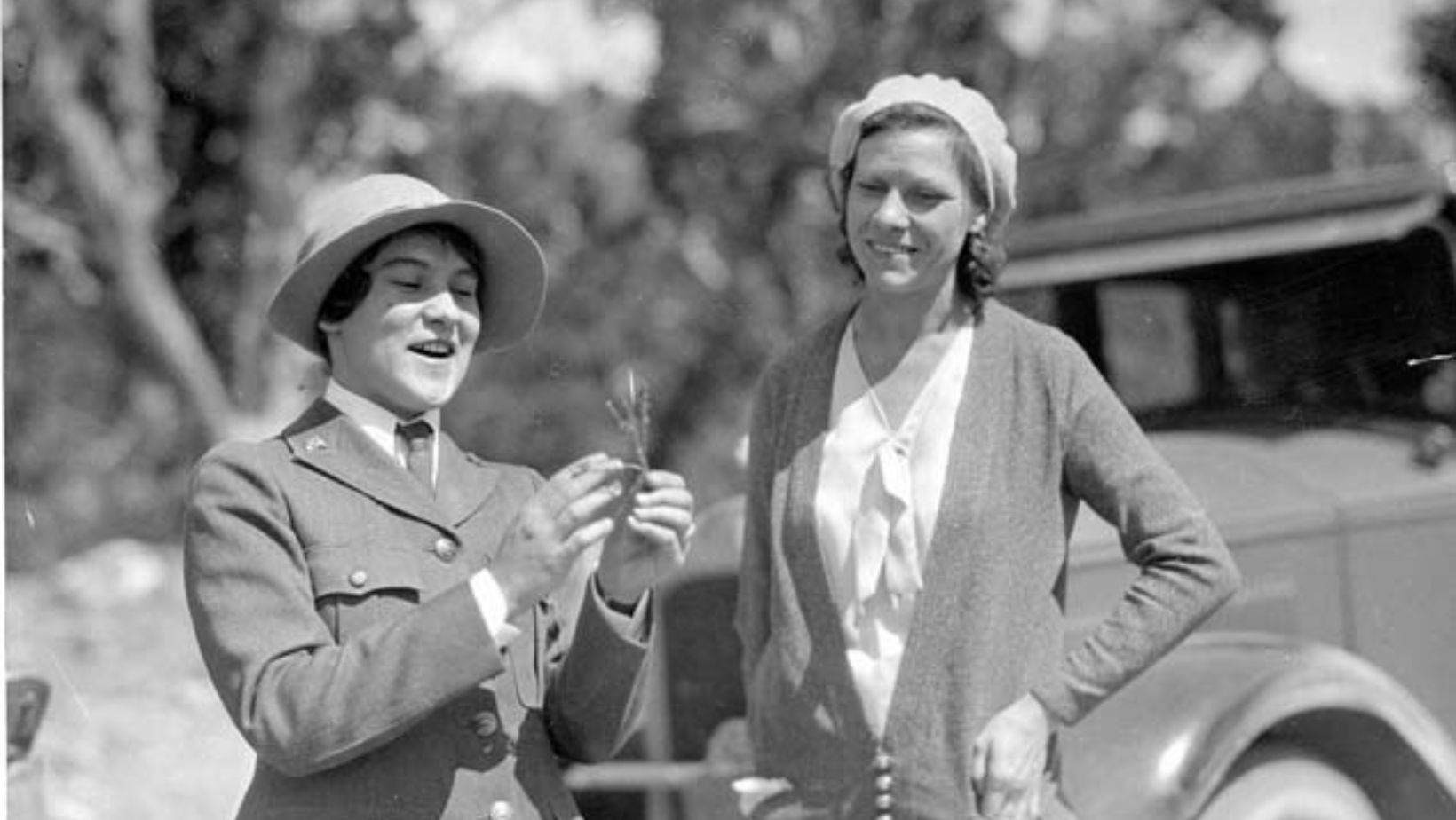
Author: Elise Lange, AWF Communications Manager
Happy International Women's Day! Today, we'd like to celebrate Pauline (Polly) Patraw.
With blistered feet, a pistol, a sleeping pad, and a plant press, she aimed to cover the whole Kaibab Plateau and create a full study of the plant life of the region.
She was originally from Colorado and studied botany at the University of Chicago, but decided to go to the Grand Canyon for two years of study during her master's.
“We went all the way down to the north end of the Grand Canyon, and we saw these meadows out on the Kaibab Plateau, and our professor, Dr. Cole, said this would be an interesting [thing] to study why the trees stop so abruptly towards the base of the meadow and then at the south end. It's such a beautiful place, and we were all carried away with the beauty of the country. I decided I'd found a study for my master's thesis. Then we went on, and I saw the Grand Canyon for the first time with this class. I walked out along the rim and it suddenly I felt as though I discovered it. It was so wonderful.”
While there, she studied the Kaibab Forest and collected samples, mostly on horseback! As part of her research, it was reported that she would take overnight trips exploring the canyon with nothing but her sleeping pad and pistol. She also hiked the canyon rim to rim, wanting to know what work had been done before her time. The culmination of her studies was a thesis summarizing the plant life of the Kaibab Plateau.
When she was unable to get a position with the Forest Service because she was a woman, she turned to her original geographical love — the Grand Canyon.

In 1930, Polly was the first woman ranger and only the second in the whole national park service. In her role, she led naturalist-guided walks, and campfire talks, planted wildlife gardens, and collected plant specimens for the Grand Canyon Park herbarium. While she preferred botany, she did briefly teach geology.
"It was so wonderful to be able to lecture on the edge of the canyon and talk about the canyon, with the canyon in front of you. If I was feeling self-conscious all I had to do was look at the canyon.”
After her marriage to Preston P. Patraw, the park’s assistant superintendent, she retired from her position but continued studying botany. She provided much guidance on botany to several national parks from Bryce Canyon to Zion as her husband's job moved around — all unpaid. One newspaper in 1932 mentioned that she was truly “regarded by the National Park Service as the leading authority on the flora of the southern Utah national parks and the Grand Canyon.”
While she believed that women make just as good of park rangers as men, she was a bit of a traditionalist, even in the 1970s, when she noted in an oral interview that "If they are able, women should be superintendents but personally I like to see a man as superintendent with women at the checking jobs."
In 1952, she published the book "Flowers of the Southwest Mesas", which has sold over 65,000 copies. In the decades following before her death in 2001, she gave lectures to civic organizations on the subject matter in her book.
.png)